During the last years we are more aware of the need to maintain and recover certain trades, especially when we talk about our natural environments and all their languages . We have discovered that ceramics encompasses hundreds of stories, towns that have boosted their activity during the pandemic or entrepreneurs who left everything to manage a vineyard or set up a rural hotel.
But first of all we have delved into three trades that should never be missed. We spoke with three women who today hold the reins of centuries-old activities , some in danger, others in full swing.
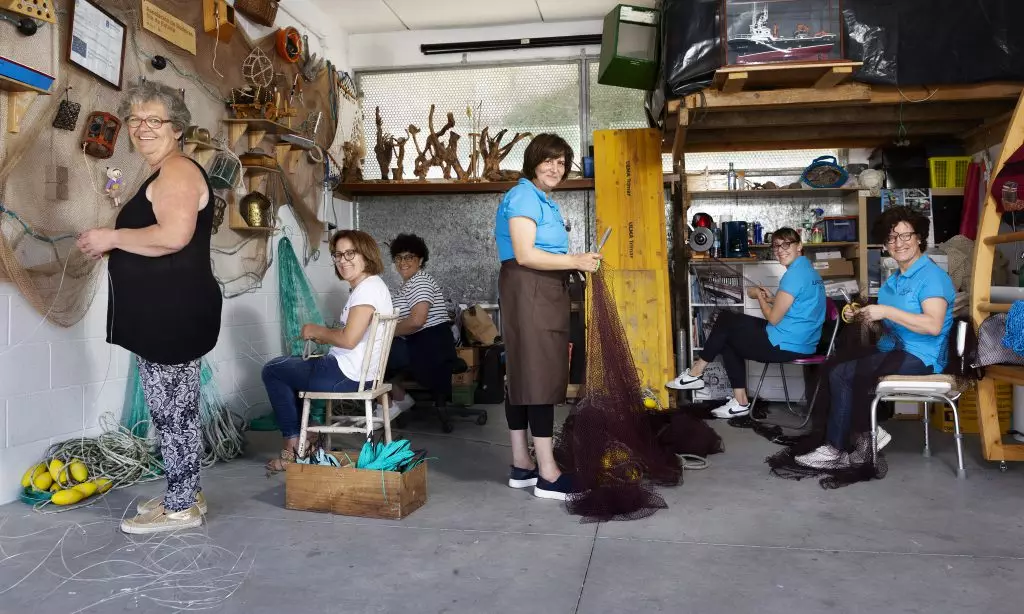
Galician Federation of Redeiras Artesás O Peirao, Galicia.
Redeiras: spinning the balance of the sea
In a Galician port, a woman spins a net with her wisdom of whom she knows the balance of the sea, its fishing and activity. Often, tourists often confuse these women with tourist attractions, perhaps subsidized by the municipalities to extol the Galician iconography as part of the experience. But it really is a profession.
The rederas are professionals dedicated to the preparation, repair and maintenance of gear and fishing gear whose visibility became latent after the Prestige catastrophe. "That's where we started to fight," Verónica Verés, president of the Galician Federation of Redeiras Artesás O Peirao, tells Condé Nast Traveler. “We redeiras were not recognized as workers of the sea, so we all got together and that is how the diversification of our activity began”.
In addition to continuing to make these essential allies of the Galician seas, the rederas reinvent today a profession in danger through various activities: talks, clothing workshops with nets (such as the Enredadas project, by Artesanía de Galicia together with Loewe) or courses divided into four modules based on the main fishing gear (trawl, purse seine, longline and minor arts).
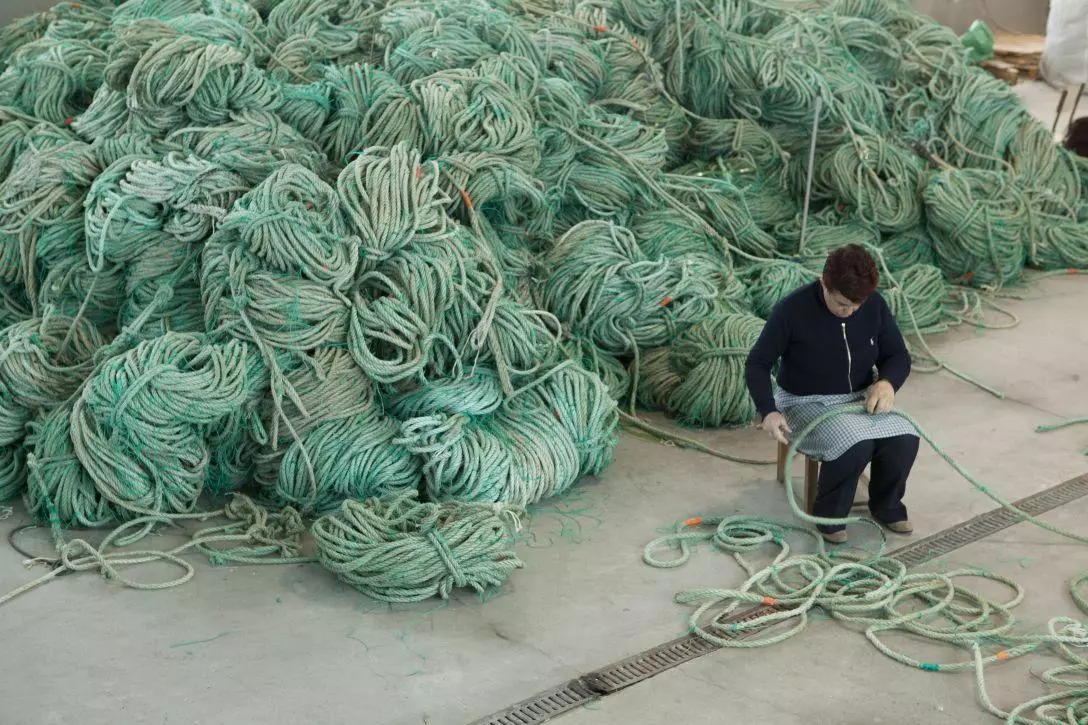
Tangled Project, Galicia.
Another of its essential activities today consists of recycle the nets that are seized by the Xunta in the interior of the seas through several sustainable initiatives: “we recycle this material. Sometimes they are used on roads or to make sanitary boxes. Now we have a project with ABANCA, a Galician bank, through which we use trawling nets that come from the sea to make goals for the football clubs and crafts. We cleaned a lot where there was a net”.
for Veronica pass on this craft it is just as important as keeping the seas clean. Teach that there are thimbles made up of hooks focused on hake fishing. Talk about the virtues of fence art and the fishing of sardines and horse mackerel, or the difference between pots to catch lobsters and trammel nets used in the crab fishery.
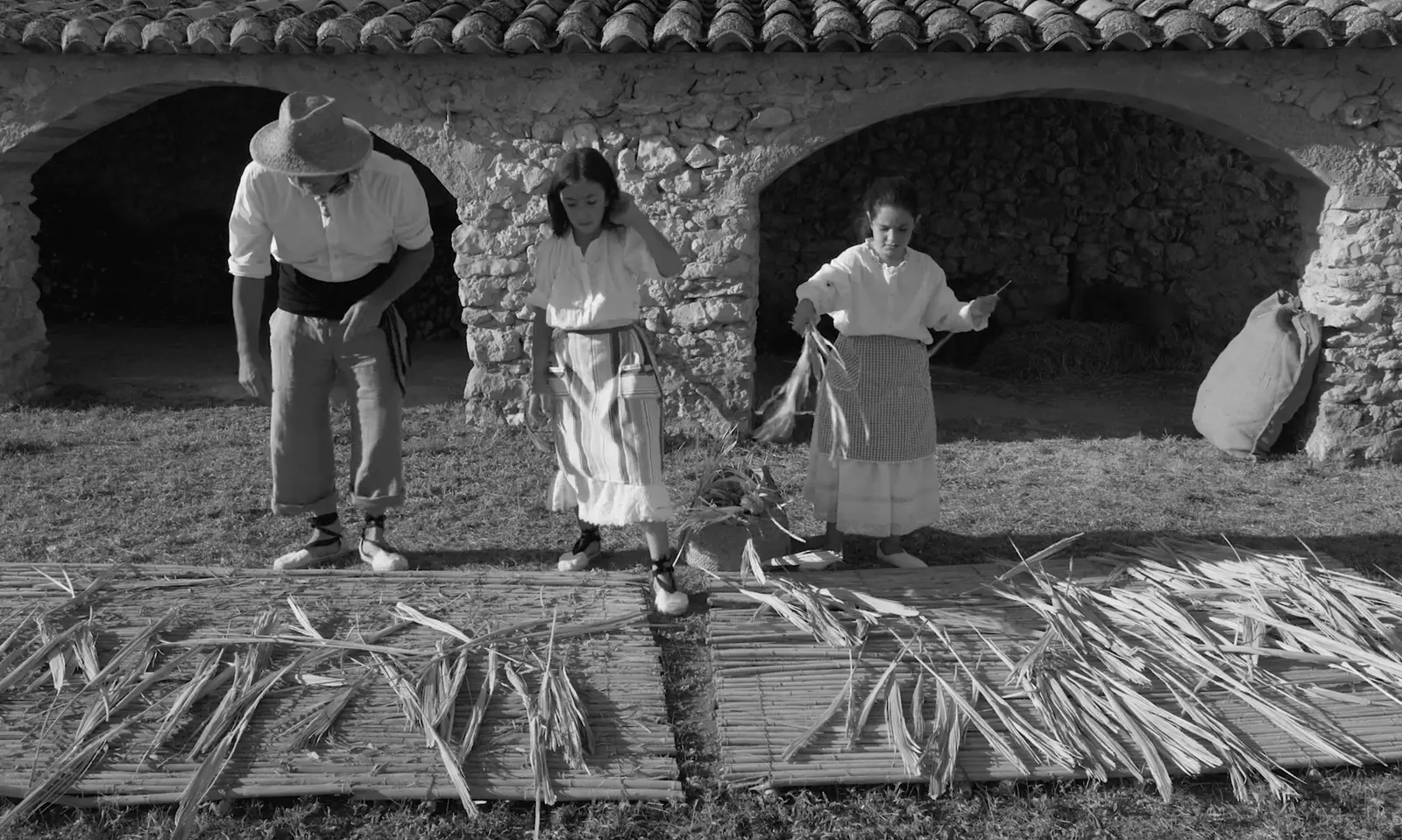
Scene from the short film ‘Barxeres’, Col.lectiu Mirades
BARCHERAS: THE MEMORY OF THE PALM LEAF
Under hurdle porches, in the middle of a square or in the solitude of a kitchen. During decades, many women from villages Alicante's Marina Alta such as Pedreguer or Gata de Gorgos work the technique known as “fer llata” (make a fight) , or the Mediterranean art of making handicrafts with previously separated palm leaves. the barcheras (barxeres in Valencian) still promote a practice whose name refers to the boat-shaped baskets that the women of this area of Alicante then they sold to contribute to the family economy.
"The women were the ones who maintained the house with their crafts," says the barchera Elisa Carrion to Conde Nast Traveler. “Thanks to the bars what they did, with what they earned they had to do all the purchase of the week (oil, rice...). The problem was that when the products arrived Similar from countries like Morocco, cheaper, production was lost . Today we make barchas for the friends and family, to people who like to remember what their grandmothers did.”
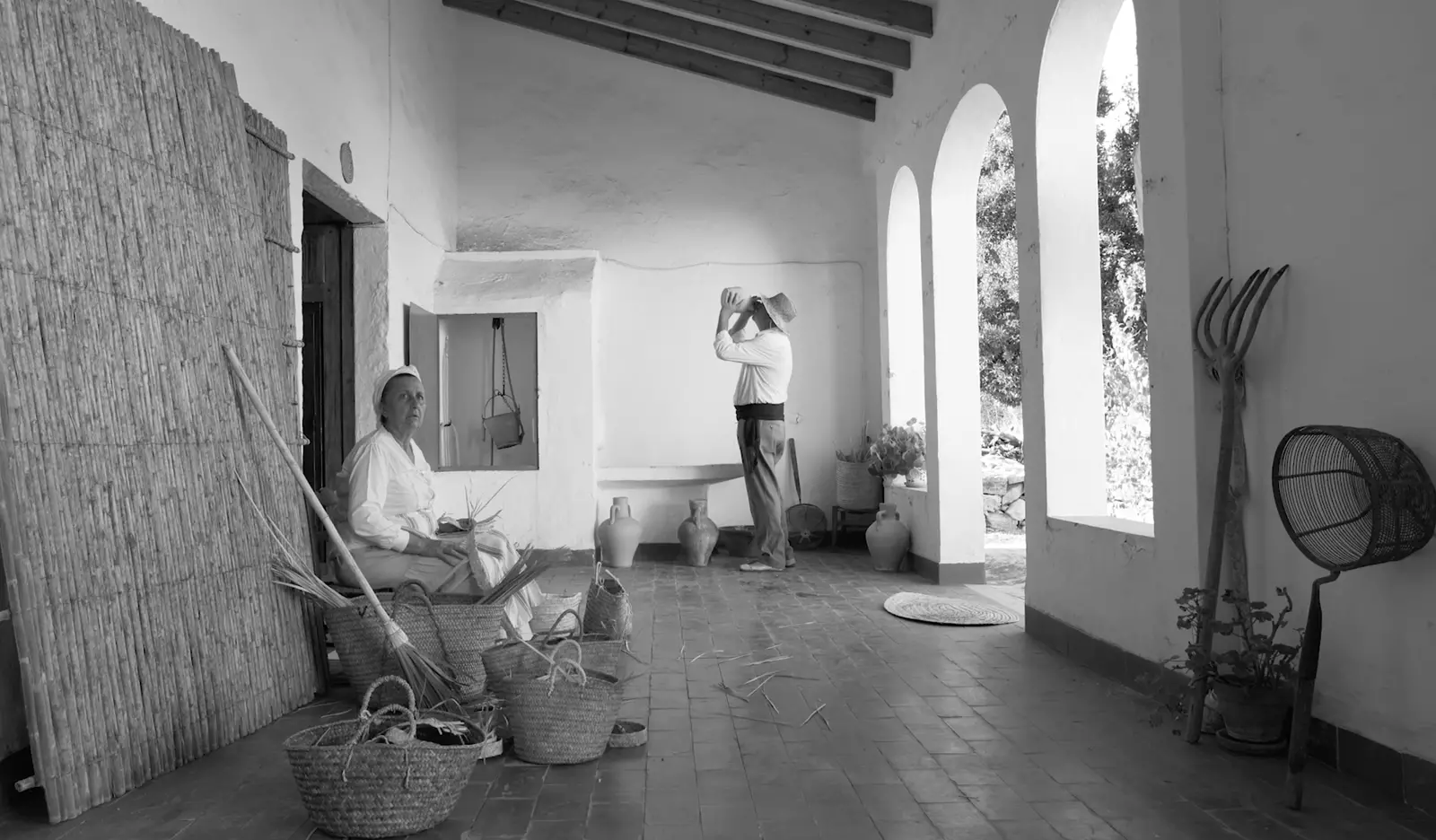
Scene from the short film ‘Barxeres’, Col.lectiu Mirades.
The boat trade it has been recovered through the workshops of local singer-songwriter and researcher Lluís el Sifoner as a way to vindicate the recognition of these women. universal allies of the cohesion social and economic development of the area, the barcheras are still waiting for a regulation that facilitates further production of these icons zero kilometer.
“We currently have a Legal problem, since it has been forbidden to touch the palms, which have always been the raw material for making our products,” Lluís el Sifoner tells Condé Nast Traveler. “ There is no regulation, no law that allows our School to recover the trade , climb our mountains as before and collect the palms we need, something that could be done as in Soria with the mushrooms: with a simple permission . We still go up to pick the palm we need, although always waiting for them to come and stop us.”
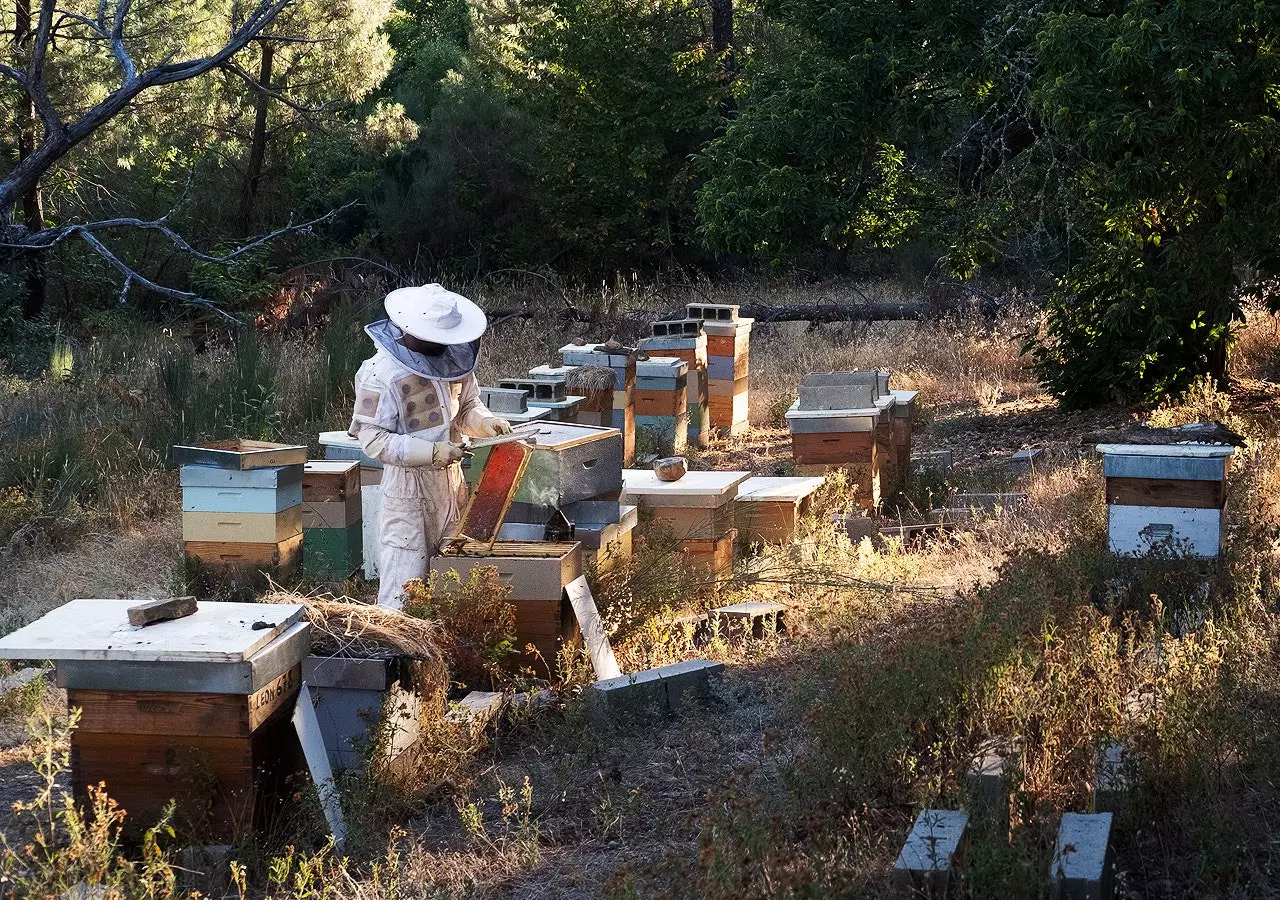
Honey beehives Camino de Santiago, Cacabelos.
BEA, THE WOMAN WHO WHISPERS TO THE BEES
Borja and Bea were born on the same street in cocoons, a town that caresses the Santiago's road on its way through El Bierzo . At the age of five, Borja accompanied his grandfather Rogelio through the Forgotten Path of Congosto until reaching a large apiary of ancient stone invaded by African bees. This species is so aggressive that Borja went with a mask and ski gloves to avoid the whims of bees, essential insects to maintain life on the planet.
Years later, Bea and Borgia they are a couple of beekeepers who distribute honey Camino de Santiago as a reference to its origin and the need to maintain this trade.
"Without beekeepers right now there would be no bees in the wild, especially since the arrival of the varroa mite ”, tells Bea to Condé Nast Traveler. "This parasite it was introduced to Europe in the 1950s from Asia and the bee here is not adapted to it. Varroa is already everywhere in the world, except in New Zealand, and it's a parasite very dangerous that can collapse a hive within two to three years. The fact that there are bees today is thanks to the beekeepers”.
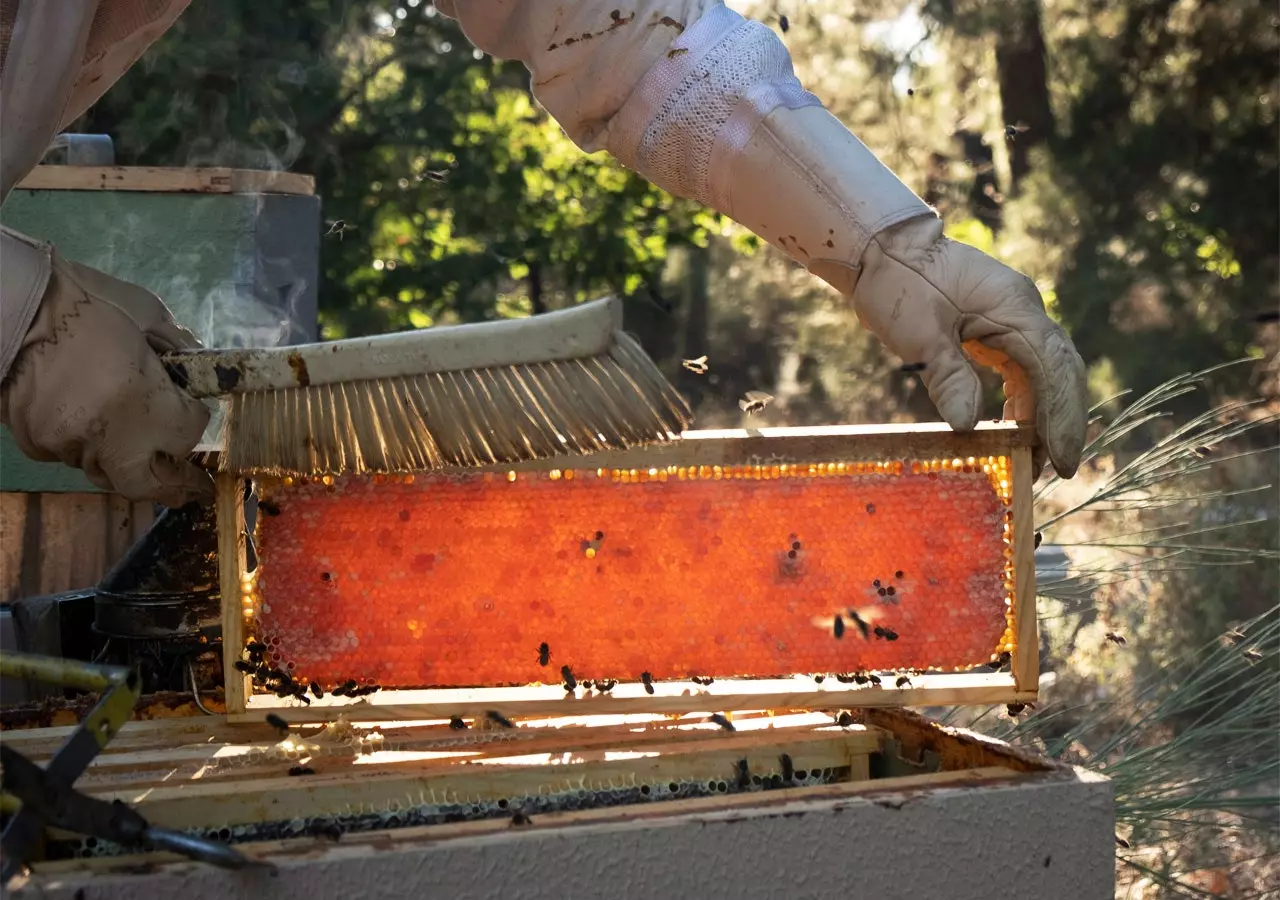
Honeycombs on the Camino de Santiago, Cacabelos.
Despite the crisis that the sector experienced a few years ago, Bea assures that this market is growing a lot and more and more young people are dedicated to beekeeping. Guardians who, beyond collecting the honey, must also manage the different threats of the honeycombs: the bear in search of honey does not only exist in fairy tales and is a real danger, in addition to the impact of urban planning, rising costs and the entry of unprocessed honey from other countries. "Quality Spanish honey goes abroad and China's comes in here," says Bea, who distributes its artisanal honey independently given the impossibility of selling it in large areas.
Bea talks about honey, but especially about a unique and precious environment, of large oak and cork oak forests. A Mediterranean climate that breathes life into this corner sealed by the Forgotten Way, the Winter Way and the French Way to Santiago.
In addition, we can delve into the history of Bea and Borja through the Paradores initiative “Nature for the Senses” in his hostel Villafranca del Bierzo.
